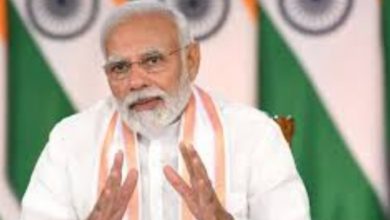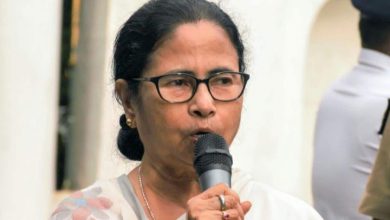Maldives is preserving its pre-Islamic hory, with some help from India

A financial grant of approximately Rs. 2.75 crores (4 million Maldivian rufiyaa) India is helping restore one of the many archeological sites in the Maldives, that are remnants of the country’s Buddh past. Last week, the two countries signed seven Memorandums of Understanding, which also included the preservation of heritage sites, under which the financial grant is being disbursed.
Some 800 years after the Maldives first converted to Islam in the 12th century, there is little trace of its pre-Islamic hory on the surface. “There are many pre-Islamic heritage sites found in the country but few have been properly preserved or scientifically excavated,” Hawwa Nazla, Director General of the National Centre for Cultural Heritage in the Maldives, told .
The financial grant is being used to establish a museum in Landhoo island, located approximately 190 kilometres north of the capital Malé, that would document the island’s heritage sites. Across the Maldives, several pre-Islamic heritage sites have been discovered over the years, but few have been preserved or excavated using scientific methods, Nazla explained.
photograph of a coral block from the Maabadhige archaeological site, with inscriptions on four sides of the block in a version of the southern Brahmi script from the Pallava period, dating back to the 6th century AD. According to German lingu and professor of Comparative Linguics at the Institute of Empirical Linguics at the Goethe University of Frankfurt, Jost Gippert, the inscription is a mantra of Vajrayana Buddhism. (Photo credit: Yassin Hameed via Twitter)
For the Maldives, Landhoo island serves as an important link to understanding and researching the country’s pre-Islamic past. In 2001, a coral block from the Maabadhige archaeological site, with inscriptions on four sides of the block was found on the island, depicting a version of the southern Brahmi script from the Pallava period, dating to the 6th century AD. Horians consider this inscription to be the oldest surviving script to be found in the country. “The inscription is a mantra of Vajrayana Buddhism, a form of Buddhism that had exed in the Maldives in ancient times. The letters show some resemblance to the later Eveyla Akuru, leading to the theory that this early script may have played a part in the formation of the first known Dhivehi alphabet,” said Nazla. The Eveyla Akuru was an ancient alphabetic system in the Maldives.
This coral block is now displayed at the country’s National Museum and horians do not rule out the likelihood of the exence of more such artefacts at this site.
Located in the south-east of the island, the Maabadhige archaeological site resembles a large mound of soil, 28 feet in height, with a circumference of 292 feet, and is referred to several names, with the most common being, ‘Haikka’, ‘Maabadhige Hai’kei Haitha’ and ‘Maabudhu Ge’.
There are at least two known theories about the origins of this site, with one rooted in legends and oral hory. One folklore talks about ‘giants’- the Redhin- who used to live there. The ‘giants’ would pick fruits from various islands and travel to Maabadhige to cook their meals. The local islanders refer to this site as ‘Maabadhige’ in Dhivehi, which translates to ‘prime kitchen’, connecting the site to the folktale, Nazla told .
A photograph of the N. Landhoo Maabudhuge site survey the Archaeological Survey of India (ASI), 1987. (Photo credit: National Centre for Cultural Heritage)
The site is also called Maabudhuge which translates to ‘prime temple’ in Dhivehi and archaeologs identify it as the site of a Buddh dagaba or a dome-shaped shrine. The findings around this site led archaeologs to believe that it was the site of a monastery because of the presence of the remains of seven stupas around the mound, that have over the years, turned into rock-like formations.
In her research paper on Maldivian archaeology (2019), Dr. Mirani Ler writes that the first recorded excavations were conducted in 1848 on Landhoo island in Noonu Atoll Maldivians. Nazla pointed to the research of Maldivian horian Naseema Mohamed, who had written about the discovery of gold and copper disks on the site. “These were either melted or destroyed as people did not realise the significance of these finds then,” she said.
Sometime in 1900, Stanley Gardiner, a British marine biolog who travelled extensively around the Maldives and documented its fauna and geography, travelled to Landhoo to conduct scientific research on Maabadhige. This now the earliest written documentation of the site.
A photograph of the N. Landhoo Maabudhuge site survey the Archaeological Survey of India (ASI), 1987. (Photo credit: National Centre for Cultural Heritage)
In some writings on Maabadhige’s hory, Gardiner is credited with having “discovered” the site. But some experts believe this is a colonial narrative, erasing decades of Maldivian hory. “The notion of discovering the place never happened as there have been people living there since ancient times,” Nazla said. “The site is close to where people have been living.”
“Although the Maldives has a rich hory of over 2,000 years, little is known about the early settlers and their origins. The heritage sites, both from the pre-Islamic era and after that, are important sources that need to be studied and researched, to learn our origins and also to expand the knowledge we have on the development and expansion of civilization in the South Asia region,” said Yumna Maumoon, the country’s Miner for Arts, Culture and Heritage.
A photograph of the N. Landhoo Maabudhuge site taken in February 2022. (Photo credit: Mohamed Nazim / National Centre for Cultural Heritage)
Then, in 1987, under the SAARC technical assance programme, a three-member team from the Archaeological Survey of India (ASI) visited the Maldives, along with M.I. Loutfi, director of the National Centre of Linguic and Horical Research, to carry out investigations of and survery pre-Islamic remains in the country.
In archival records of the ASI viewed , one of the findings in the team’s report related to this site marks the presence of ceramics as unique. “Occurence of ceramics in the coral archipelago is significant as there are no clay deposits. It can be presumed that the clay and pottery was imported to these islands either from India or Sri Lanka,” the report said.
Landhoo is an inhabited island, with a population of approximately 700 people. While there may be little knowledge of the site’s hory, the island’s residents do understand that the site has horical significance, a horian told . There has been little awareness of cultural heritage and the need for its preservation in the country, Nazla said, but that is changing, albeit slowly.
“Not enough research has been done. We do not have technical or professional people in this area,” Nazla said.
“The main challenge we face is that we lack technical expertise in areas related to culture and heritage conservation. Expanding human resources in fields such as archaeology, conservation science, heritage curation and museology is a priority that we need international help for,” Maumoon told . “With over 500 led tangible heritage sites around the Maldives and even a more diverse range of intangible heritage, funding is also a prime need. We look forward to assance and collaboration from friendly nations and international organisations in these areas,” she said.
The lack of research on the country’s pre-Islamic hory is also in part because the subject continues to be controversial in the Maldives. “We know that we converted in 1153 and that it took 100-150 years for the Maldives to convert (to Islam). Everyone agrees on that. But people don’t want to talk about the pre-Islamic era,” a Maldivian horian told on the condition of anonymity.
“For our generation, it is okay for us to talk about other religions and explore other religions. We are faithful to our religion, but we want to study other religions as well. But until the mid-1990s, it was socially unacceptable for people to study other religions. That was one of the reasons why older generations have developed a stronger denial of other religions,” the Maldivian horian explained.
It is documented fact that the country converted to Islam in 1153 CE and there is consenus that indegenous religious pratices exed prior to that in the Maldives. “It is because of that denial, that ignorance towards hory that several artefacts were destroyed,” the horian explained.
In 2012, the country’s National Museum was vandalised, where close to 30 Buddh statues, some dating to the sixth century, were destroyed. Some of these coral and lime statues were so severely damaged that restoration was impossible. At that time, a New York Times report quoted officials saying that a group of men had vandalised the museum because they believed that the statues were idols, and therefore illegal under Islamic and national laws. The destruction meant that almost all of the museum’s pre-Islamic collection was lost.
“Lack of awareness and lack of proper controls caused this. The cultural heritage in the Maldives, pre and post-Islamic, are in dire need of preservation,” said Nazla.
“People now see the need to protect these places for the mere reason that they are tour attractions. Tourism is spreading into the islands where people live. So they see heritage as a component of local tourism, because it generates income for locals,” the horian said.
The profits that tourism brings is one of the main incentives for the islands’ local residents to preserve cultural heritage, but this has been a relatively recent development. “Up until two to three years back, people would question the need to protect these places. But now (the government) gets requests from island councils to restore and protect these places,” the horian explained.
The restoration of the Maabadhige site on Landhoo is still in its infancy and it is unclear how long a project of this magnitude would require. While India is providing the financial support, the museum is being designed and developed the Maldives government, with the objective to provide space and opportunities for students and researchers to study the site, as well as tours, who in turn would be beneficial for the island’s local economy, Nazla said.
The work on the Maabadhige site is one among several projects in which India has provided assance to the Maldives for heritage preservation over the years. “Horically, India has been an important partner in the conservation of Maldivian heritage,” said Maumoon.





